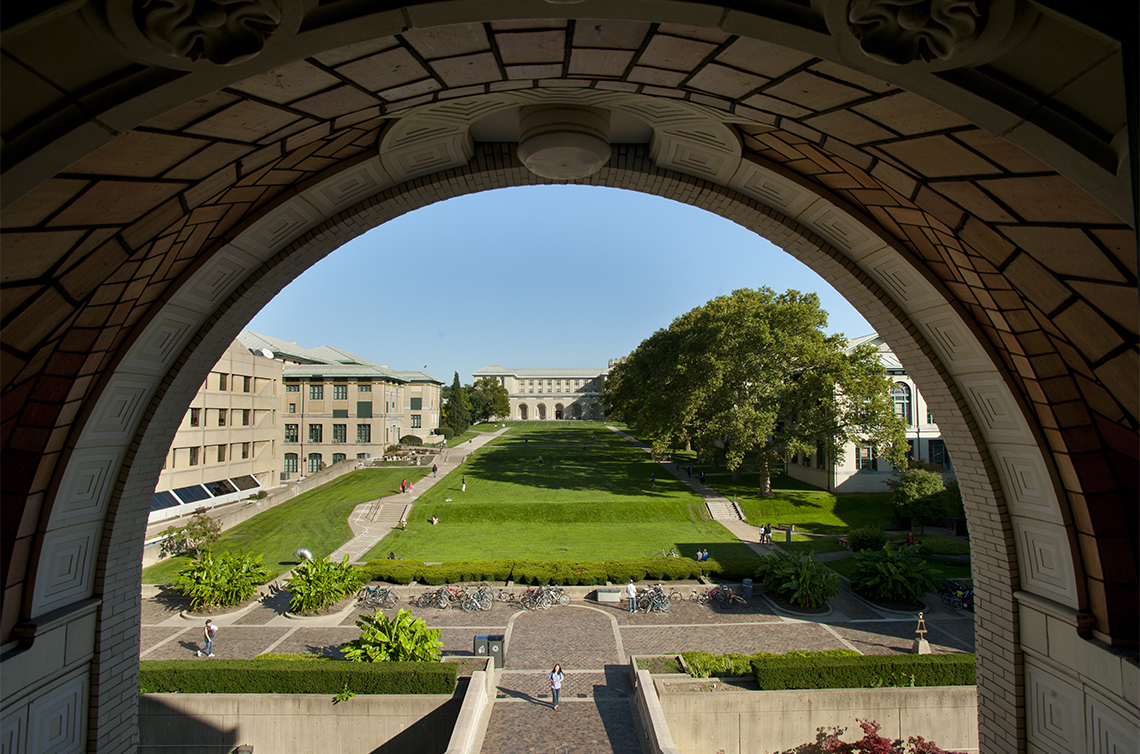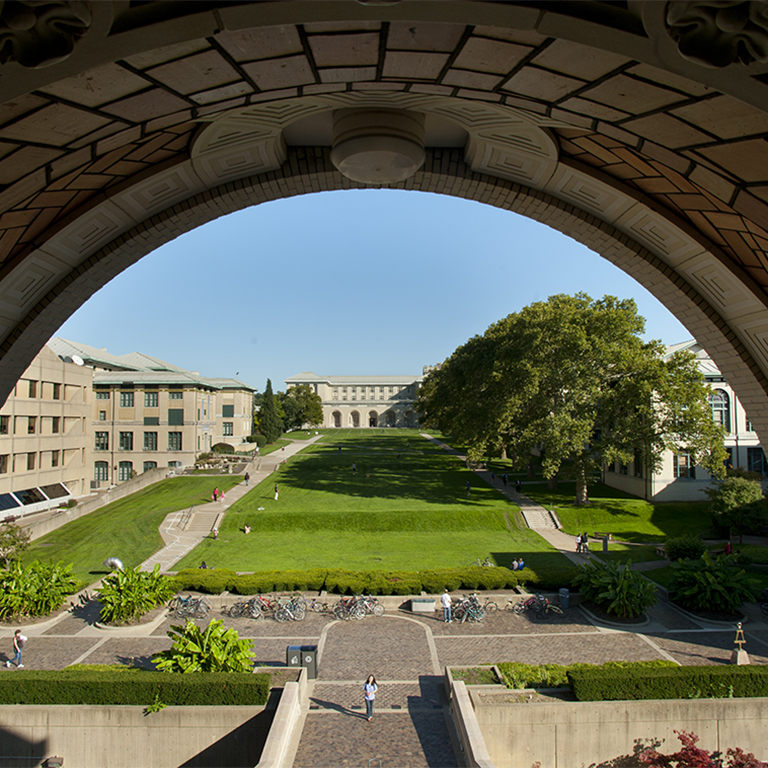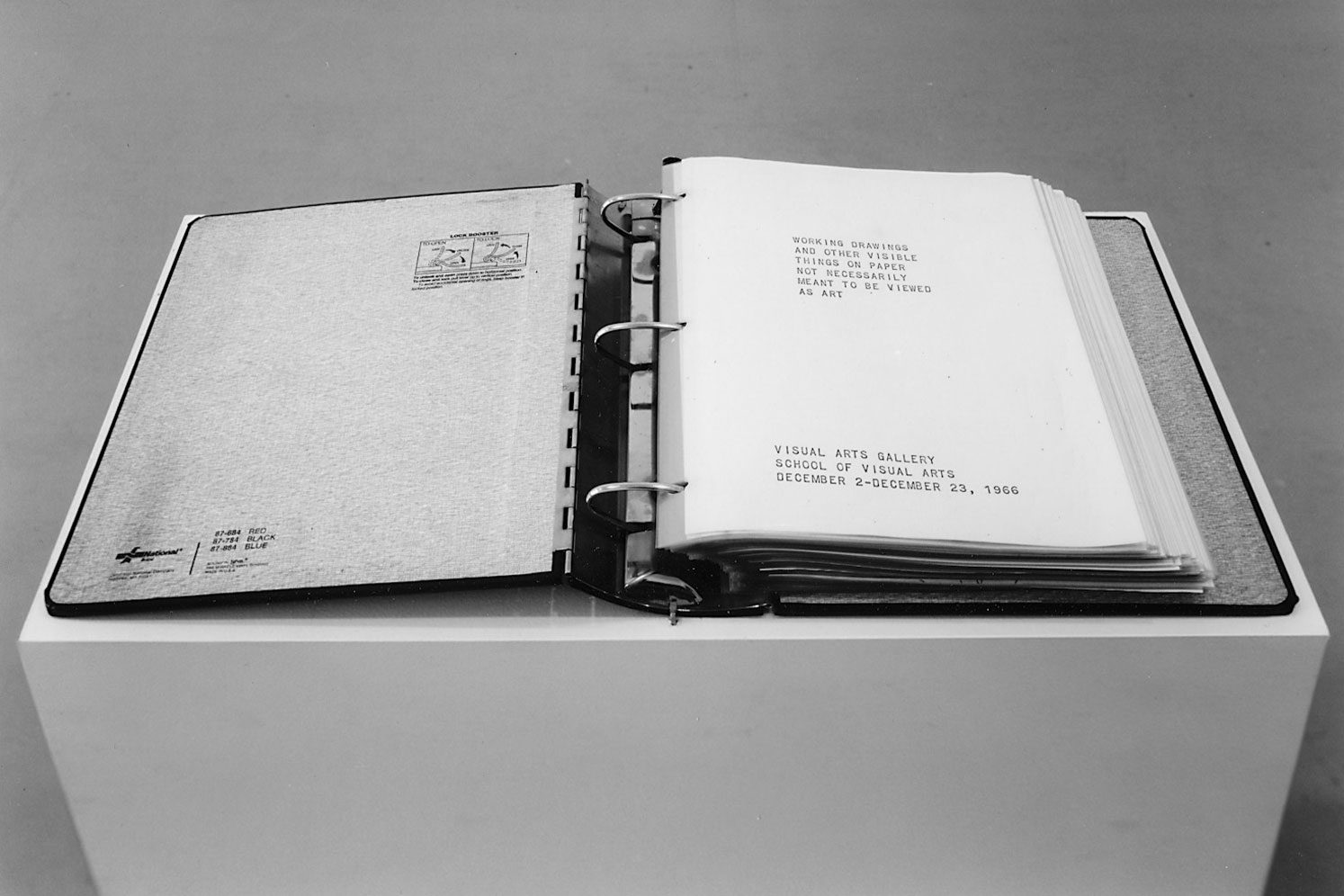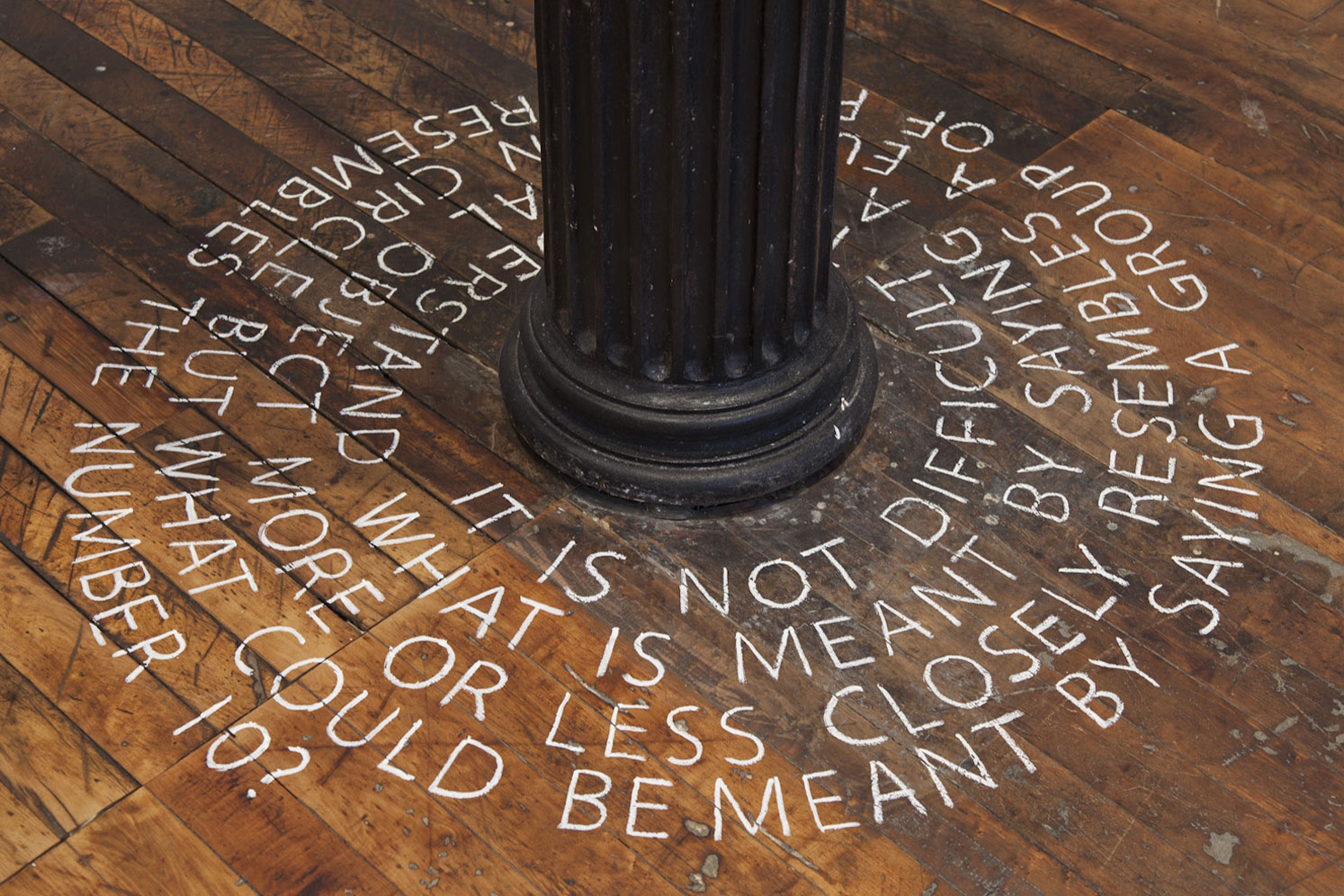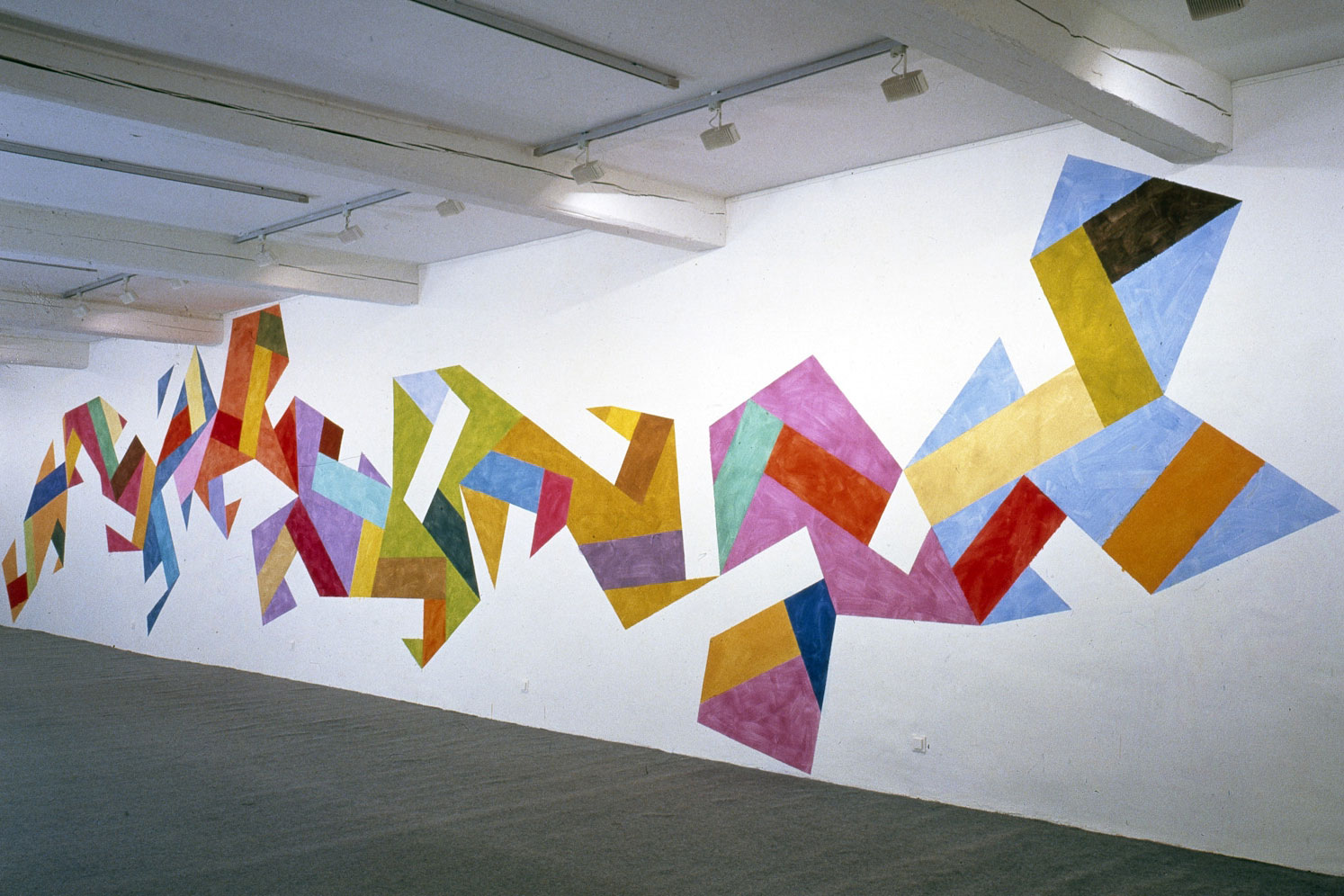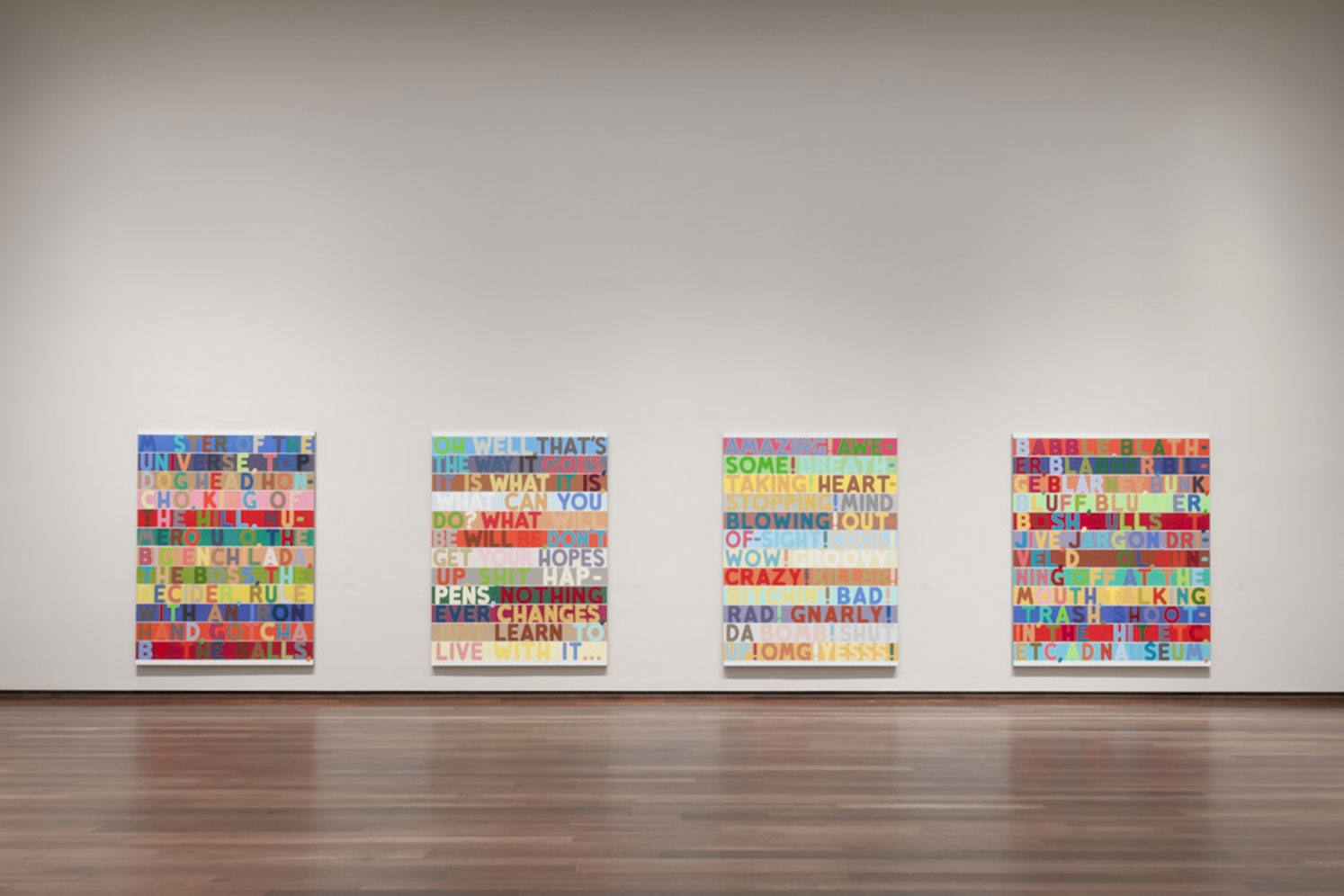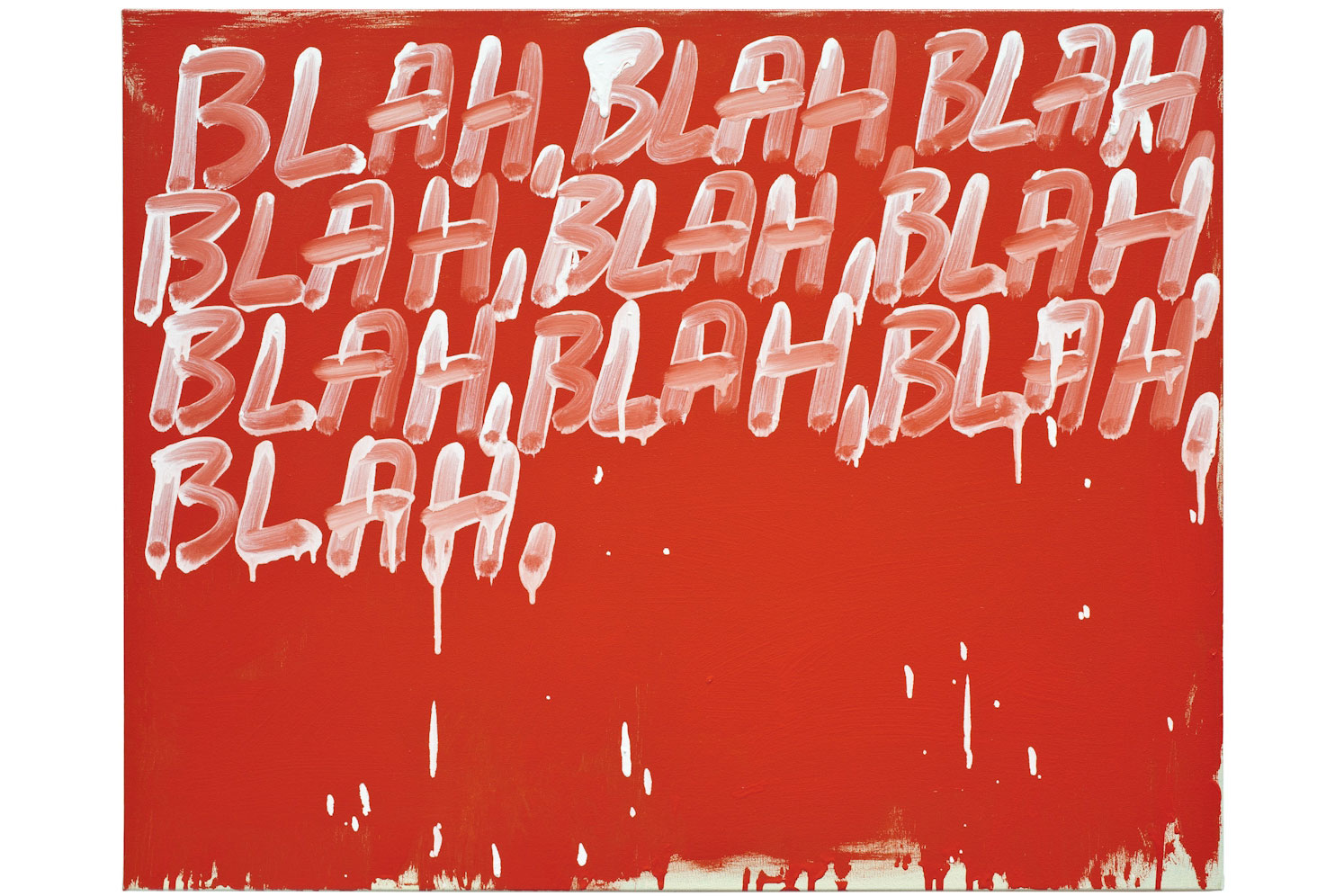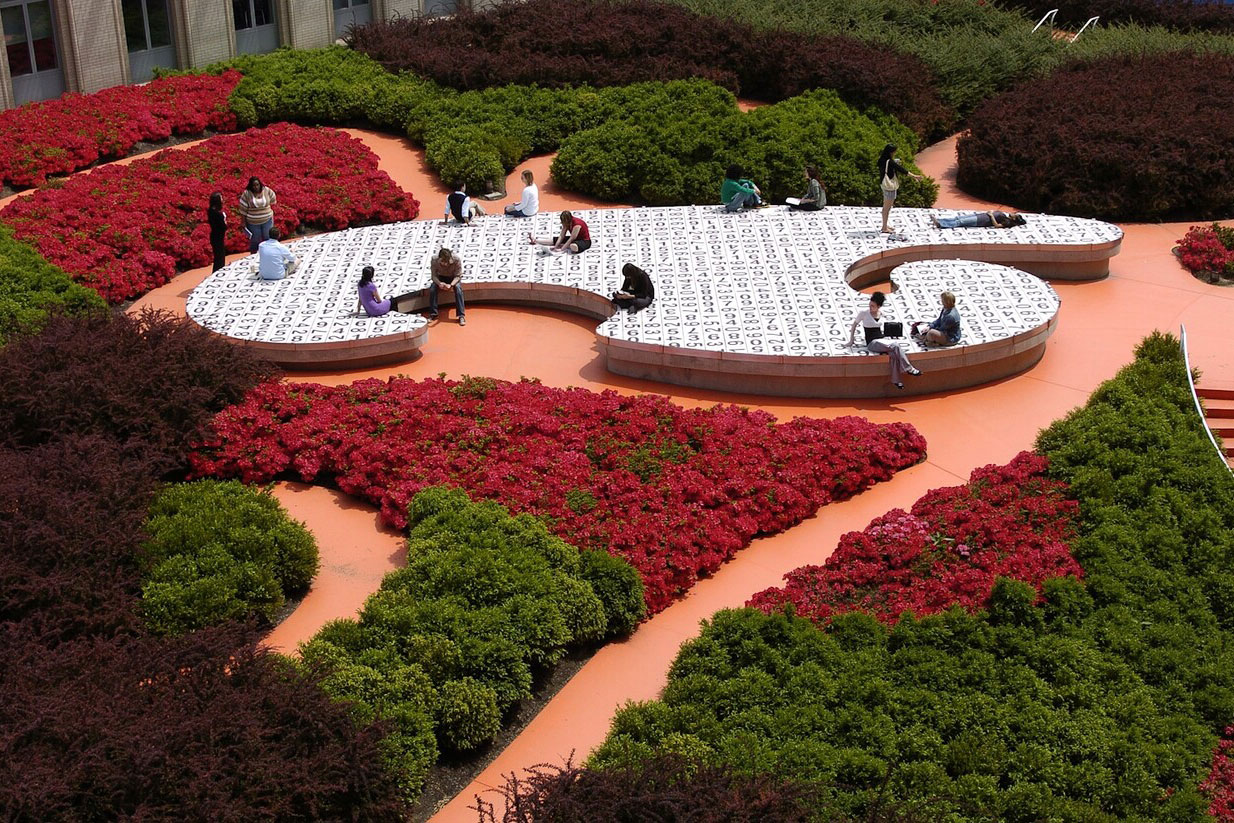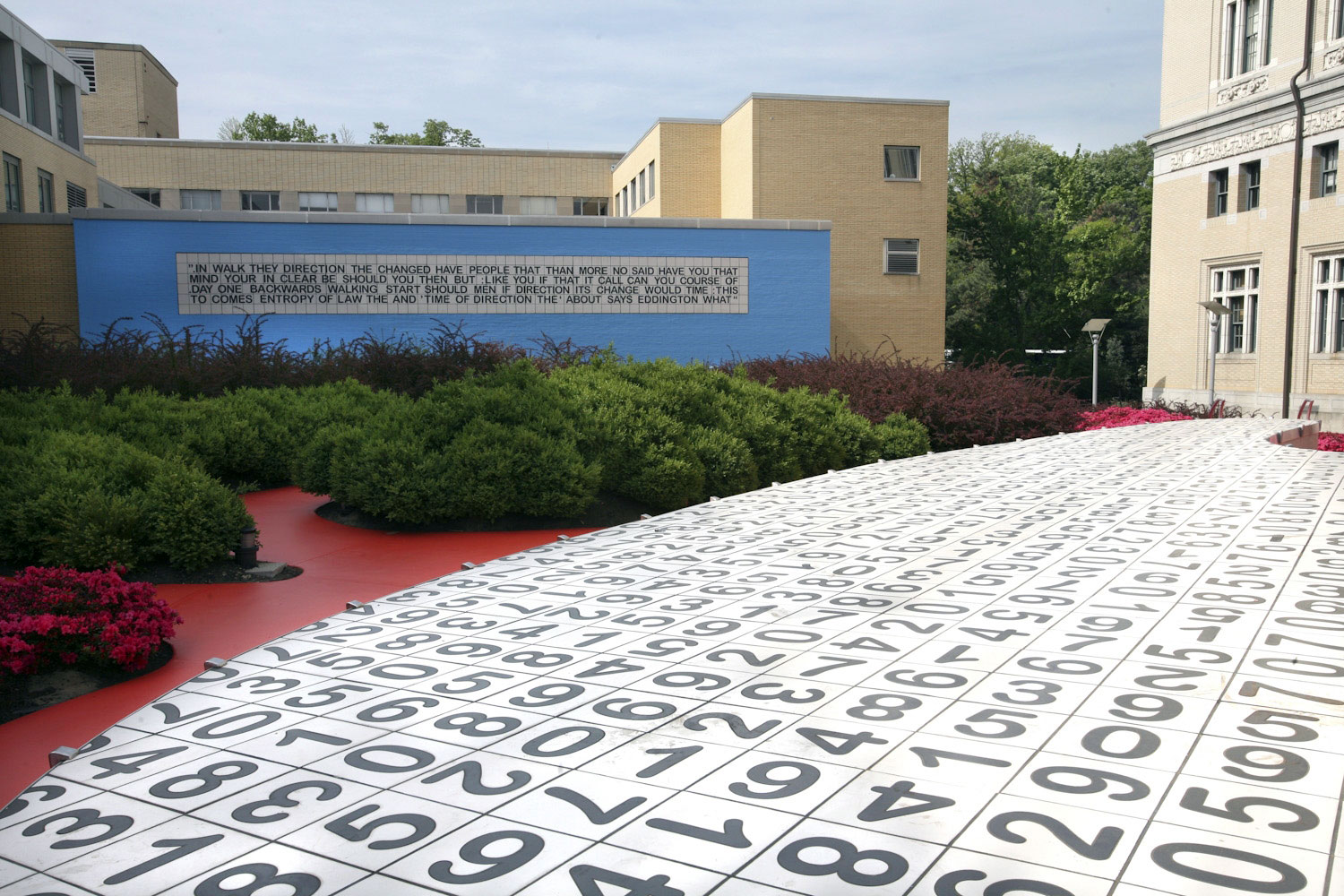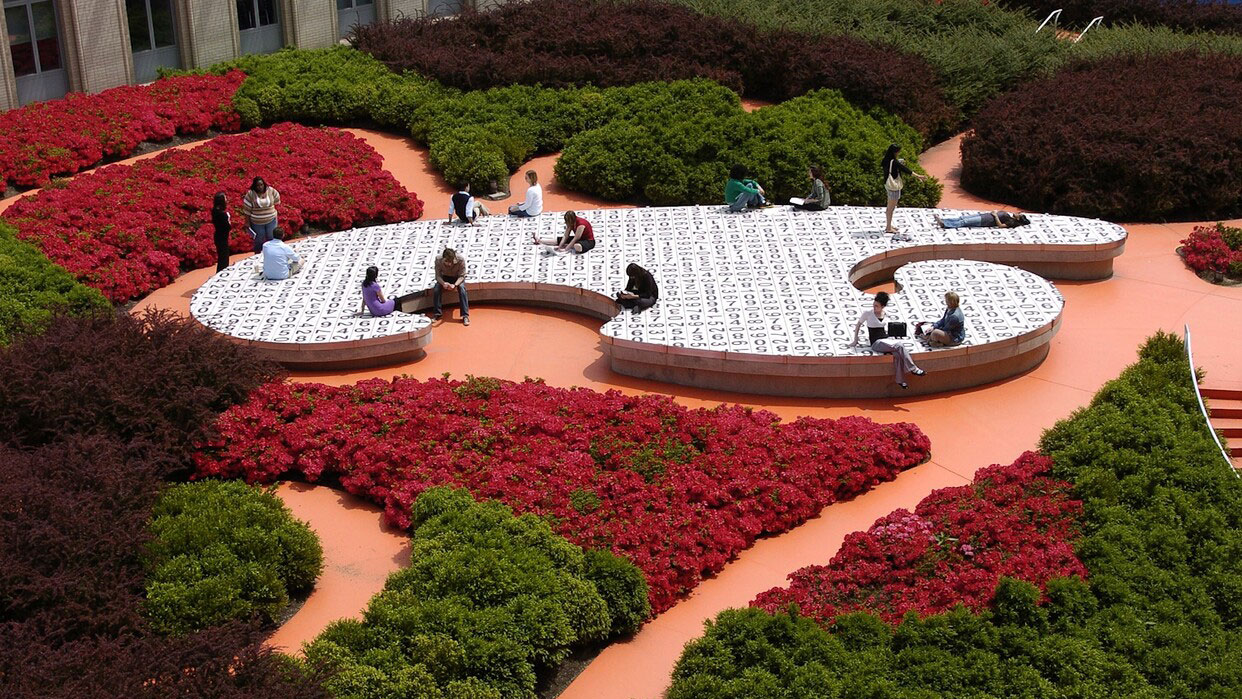
A pioneer of conceptual art, Bochner explored language and perception in groundbreaking ways, leaving a lasting mark on Carnegie Mellon and beyond.
Mel Bochner, a groundbreaking figure in the development of conceptual art, passed away on February 12, 2025, at the age of 84. Throughout his career, Bochner redefined artistic expression, exploring the meanings of language and perception in art. His legacy at Carnegie Mellon is embodied in the Kraus Campo, a permanent public artwork and rooftop garden atop the Posner Center that serves as both a contemplative community space and a testament to his conceptual vision.
Born in Pittsburgh in 1940, Bochner studied at Carnegie Institute of Technology (now Carnegie Mellon University), where he developed an interest in the intersections of art and philosophy. After graduating in 1962, he moved to New York and became a key figure in the emerging conceptual art movement, which fundamentally challenged traditional definitions of art. His 1966 exhibition, “Working Drawings And Other Visible Things On Paper Not Necessarily Meant To Be Viewed As Art,” is regarded as one of the first conceptual art exhibitions.
Bochner’s practice was deeply engaged with language, often incorporating words and phrases with a blend of playfulness and depth. His famous phrase, “Language is not transparent,” became a conceptual anchor for much of his work, appearing repeatedly across decades of paintings, installations, and critical writings. HisThesaurus Paintings, which arrange synonyms in vibrant, block-letter compositions, explored the nuances of meaning and the ways in which language shapes thought. Bochner’s use of measurement, numerical systems, and repetition further underscored his fascination with how information is structured and perceived.
Bochner’s connection to Carnegie Mellon remained strong throughout his life. His work, Kraus Campo, was commissioned by university trustee Jill Gansman Kraus (BFA ‘74) and her husband Peter Kraus. The work was inaugurated in 2004, and Bochner was also recognized with an honorary Doctor of Fine Arts in 2005.
Designed in collaboration with landscape architect Michael Van Valkenburgh, the Kraus Campo is an integrated work of art and landscape architecture, offering a dynamic and ever-changing space for contemplation and interaction. Bochner envisioned it as “a place where walking and getting lost in conversation could become an active, rather than a passive pleasure; a place to meet friends and colleagues, or encounter strangers from other disciplines—a literal marketplace of ideas.”
At the heart of the Kraus Campo is a sculptural platform covered in a distinctive numerical pattern, reflecting Bochner’s long-standing interest in systems of measurement and mathematical order. Surrounding this central form, winding orange pathways meander through lush plantings carefully selected for their seasonal dynamism, choreographing an experience that shifts with time and movement. On an adjacent wall of the Hall of the Arts, a tiled quotation from philosopher Ludwig Wittgenstein is transcribed in reverse order, creating a visual puzzle that encourages deeper contemplation of language and meaning.
“Carnegie Mellon University is proud to count Mel Bochner among our most distinguished alumni,” said CMU President Farnam Jahanian. “We count his work on campus — the Kraus Campo — as an exquisite tribute to the uniquely bold and borderless learning environment that defines a CMU education today. We join the world in celebrating his many contributions as an artist, thinker and innovator whose legacy will continue to shape and inspire generations to come.”
Bochner’s work is held in major museum collections worldwide, including the Museum of Modern Art, the Whitney Museum of American Art, and the Art Institute of Chicago. Through his rigorous exploration of language and representation, he inspired generations of artists to question and expand the possibilities of art. He was also a dedicated educator, shaping generations of artists through his teaching at the School of Visual Arts in New York and other institutions. His critical writings and deep engagement with the history and philosophy of art continue to resonate, challenging artists and audiences to rethink the structures that shape perception and knowledge.
“Mel Bochner was a brilliant force and an unparalleled artist, educator, and advocate,” said School of Art Head Charlie White. “He epitomized the possibilities of art in the academy, in the art world, and in broader culture. His ingenuity will remain a lasting source of inspiration for artists and thinkers alike, encouraging us to continue pushing the boundaries and definitions of art.”

